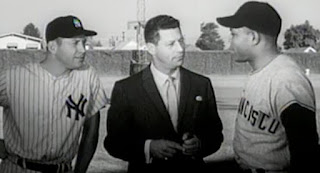Larry Corcoran is Ambidextrous
It was June 16, 1884, and the Chicago White Stockings were at Olympic Park in Buffalo, NY to play the Bisons. Manager Adrian Anson had allowed Fred Goldsmith, his secondary pitcher, the day off so Goldsmith could travel to Canada. This left the team with only one pitcher, Larry Corcoran.
Unfortunately, on that day Corcoran was dealing with an injury on the index finger of his right hand, his pitching hand. The Buffalo Commercial noted that "He has a felon, and when a felon is on a pitcher's right index finger he has no business in the box." It is not surprising that Corcoran was dealing with injuries, because for four years manager Anson had been over using him. Between his rookie season in 1880 and through the end of the 1884 season, Corcoran had 170 wins, pitched 2,279 innings, and finished 246 of the 255 games he started, all with a 2.23 ERA. To average that out, he won 34 games, completed 49 of 51 games started, and pitched 456 innings per year. Corcoran had to have been a tired man, but he kept on going even when it meant he had to throw with his non-pitching arm. On that day he alternated between using his left and right arm to pitch for four innings, but it was clear that he was not going to be effective. He allowed two home runs (Deacon White and Jim O'Rourke,) five singles, three walks, and six runs. The merciful Anson pulled Corcoran from the game and placed him at shortstop. It was one of only two games during the season that Corcoran would not complete.
With Corcoran out of the box and Goldsmith in Canada, the question quickly became who was going to pitch the final five innings of the game? The answer was a mishmash of infielders. When Corcoran went to play shortstop, Mike "King" Kelly moved to third base and the third baseman Ned Williamson took over as pitcher. He quickly gave up a double, four straight singles, a walk and threw a wild pitch in two innings before being replaced by Kelly. The King was known for his hitting, not his pitching and it showed. He allowed a home run, a triple, a single, walked three and threw two wild pitches before Anson sacrificed his final lamb to the pitching slaughter, second baseman Fred Pfeffer. Pfeffer was able to complete the final inning, but by the time everything was over Buffalo had won the game by a score of 20-9. For the season Williamson, Kelly and Pfeffer would pitch less than 10 combined innings.
Corcoran had made history by becoming only the second pitcher to throw with both arms during a game, the first being Tony Mullane in 1882. However, after the fourth inning the barrage of Buffalo hitting against the White Stockings infielders trying to pitch made for an uninteresting game. A little over a week later, on June 27, Corcoran would create more history by becoming the first pitcher to throw three career no-hitter when he blanked the Providence Grays.
Unfortunately, on that day Corcoran was dealing with an injury on the index finger of his right hand, his pitching hand. The Buffalo Commercial noted that "He has a felon, and when a felon is on a pitcher's right index finger he has no business in the box." It is not surprising that Corcoran was dealing with injuries, because for four years manager Anson had been over using him. Between his rookie season in 1880 and through the end of the 1884 season, Corcoran had 170 wins, pitched 2,279 innings, and finished 246 of the 255 games he started, all with a 2.23 ERA. To average that out, he won 34 games, completed 49 of 51 games started, and pitched 456 innings per year. Corcoran had to have been a tired man, but he kept on going even when it meant he had to throw with his non-pitching arm. On that day he alternated between using his left and right arm to pitch for four innings, but it was clear that he was not going to be effective. He allowed two home runs (Deacon White and Jim O'Rourke,) five singles, three walks, and six runs. The merciful Anson pulled Corcoran from the game and placed him at shortstop. It was one of only two games during the season that Corcoran would not complete.
With Corcoran out of the box and Goldsmith in Canada, the question quickly became who was going to pitch the final five innings of the game? The answer was a mishmash of infielders. When Corcoran went to play shortstop, Mike "King" Kelly moved to third base and the third baseman Ned Williamson took over as pitcher. He quickly gave up a double, four straight singles, a walk and threw a wild pitch in two innings before being replaced by Kelly. The King was known for his hitting, not his pitching and it showed. He allowed a home run, a triple, a single, walked three and threw two wild pitches before Anson sacrificed his final lamb to the pitching slaughter, second baseman Fred Pfeffer. Pfeffer was able to complete the final inning, but by the time everything was over Buffalo had won the game by a score of 20-9. For the season Williamson, Kelly and Pfeffer would pitch less than 10 combined innings.
Corcoran had made history by becoming only the second pitcher to throw with both arms during a game, the first being Tony Mullane in 1882. However, after the fourth inning the barrage of Buffalo hitting against the White Stockings infielders trying to pitch made for an uninteresting game. A little over a week later, on June 27, Corcoran would create more history by becoming the first pitcher to throw three career no-hitter when he blanked the Providence Grays.
 |
| Chicago Tribune June 17, 1884 Pg. 7 |




Comments
Post a Comment